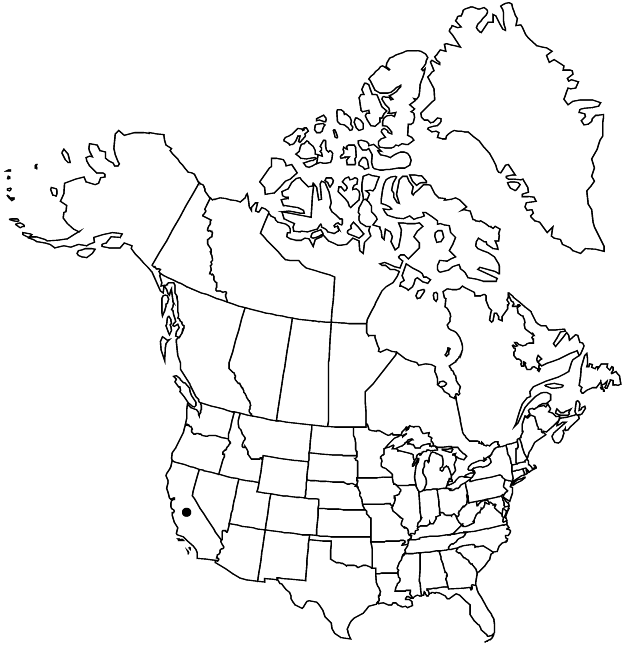Eriogonum gossypinum
Bull. Calif. Acad. Sci. 1: 274. 1885.
Herbs, spreading, annual, 0.5–2 dm, tomentose, grayish to reddish. Stems: caudex absent; aerial flowering-stems erect, not striated or angled, solid, not fistulose, 0.2–0.5 dm, tomentose. Leaves basal and cauline; basal: petiole 0.5–1 cm, floccose, blade broadly oblanceolate, 1.5–4 × 0.5–1 cm, tomentose abaxially, floccose or glabrate and grayish to green adaxially, margins crenulate, often slightly revolute; cauline sessile, blade lanceolate, 0.3–2 × 0.2–0.7 cm, similar to basal blade. Inflorescences cymose, diffuse, 3–17 × 5–25 cm; branches tomentose; bracts 3, scalelike, 1–2 × 0.5–1.5 mm. Peduncles spreading, straight, capillary, 0.2–1.5 cm, thinly tomentose to floccose or glabrous. Involucres turbinate, 2.7–3 × 2–2.5 mm, glandular-puberulent, densely tomentose adaxially; teeth 5, spreading, 0.8–1.2 (–1.5). Flowers 1.5–1.7 mm; perianth white, glandular-puberulent; tepals monomorphic, narrowly oblong; stamens included, 1–1.5 mm; filaments pilose proximally. Achenes light-brown, 3-gonous, 1.3–1.5 mm, glabrous. 2n = 40.
Phenology: Flowering year-round.
Habitat: Clayey gypsophilous flats and slopes, grassland and saltbush communities
Elevation: 100-500 m
Discussion
Eriogonum gossypinum is rare to infrequent on the foothills of the Inner Coast Ranges in Kings (Kettleman Hills) and eastern San Luis Obispo counties, with two centers of concentration in Kern County, one in the Taft area and another east of Bakersfield. The Kern County populations are the most extensive and subject to the greatest habitat destruction. The species is protected at The Nature Conservancy’s Sand Ridge Preserve near Edison.
Selected References
None.
Lower Taxa
"dm" is not declared as a valid unit of measurement for this property.
